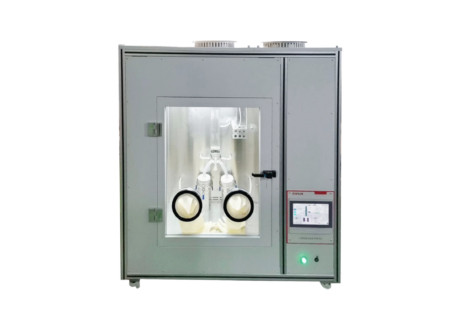
NewsInformation Center
BFE Testing: Understanding ASTM F2101 and EN 14683 Standards
2023/12/08
BFE (Bacteria Filtration Efficiency) is a metric used to evaluate the ability of a mouthpiece or other medical mask to filter out bacteria.
Here is some additional information to help you better understand the ASTM F2101 and EN 14683 standards when talking about BFE testing:
1. ASTM F2101:
ASTM F2101 is a standard developed by the American Society for Testing and Materials Standards for evaluating the bacterial filtration efficiency of masks. Bacteriophage MS2, with a particle size of approximately 0.027 to 0.08 microns, is used as the test strain in the testing process. The test samples were challenged with bacterial aerosols at a pressure of 3.0 ± 0.3 bar. By calculating the filtration efficiency, a percentage indicating the bacterial filtration capacity is derived.
2. EN 14683:
EN 14683 is a standard developed by the European Organization for Standardization and is also used to evaluate the bacterial filtration efficiency of masks. Staphylococcus aureus (Staphylococcus aureus) and Escherichia coli (Escherichia coli) are used as test strains during testing. The test samples were subjected to a bacterial water challenge at a specific flow rate and pressure. By calculating the filtration efficiency, a percentage indicating the bacterial filtration capacity is derived.
3. Importance of BFE value:
The BFE value is one of the most important indicators for evaluating the protective performance of a mask. A high BFE value indicates that the mask has a greater ability to filter bacteria, which reduces the entry and spread of bacteria. Determining the BFE value of a mask helps to select the appropriate protective equipment and ensure that it meets the intended medical and protective requirements.
It is important to note that both ASTM F2101 and EN 14683 are standards for testing the bacterial filtration efficiency of masks and are used to evaluate a mask's ability to filter out bacteria. Masks containing ASTM F2101 or EN 14683 certifications are generally considered to be in compliance with the relevant standards and provide a certain level of protection. However, there may be variations in different standards and certification organizations. It is recommended that when purchasing a mask, you check the certification and performance specifications of the mask and choose the right mask according to your actual needs. In addition, the correct wearing and use of masks is also an important factor in protecting one's own health and that of others.
Previous: Understanding the Basics of Salt Spray Test: An Overview of ASTM B117
N e x t : 4 Tips for Proper Maintenance and Calibration of Flame Test Equipment




